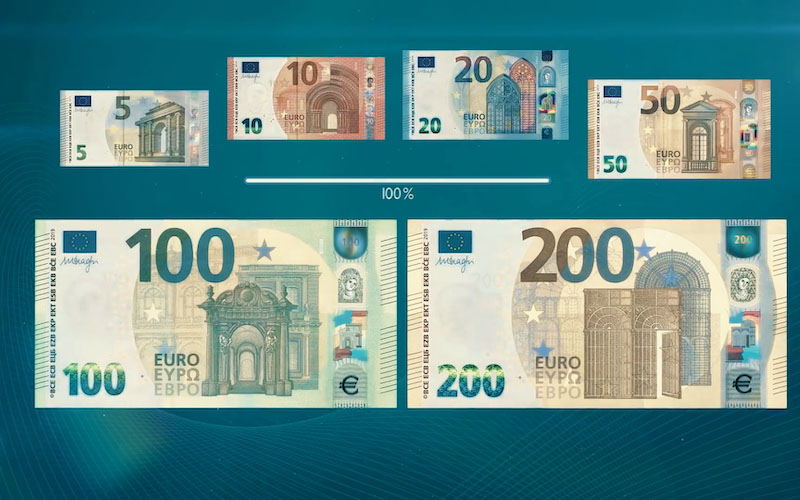Will the US dollar fall below 97.60? The answer lies in two data points
2025-08-15 19:59:27

Confidence Structure and Leading Signals
Overall sentiment rose to a five-month high of 61.7 in July, a significant rebound from 52.2 in May, but the structure is uneven: the current situation component rose to 68.0, while the expectations component fell to 57.7. A separate analysis of trading conditions is needed: the current situation more closely reflects current employment/income and balance sheets, while the expectations component provides a forward-looking signal of consumption and savings tendencies for the coming year. If the "expectations > current situation" trend reverts in August, growth resilience is likely to continue; otherwise, it would indicate a marginal weakening of consumption momentum, making front-end interest rates more sensitive to weak readings.
Inflation expectations: Key anchor data for this pricing show that one-year inflation expectations fell to 4.5% in July, continuing their downward trend (from 5.0% in June and 6.6% in May). Five-year expectations fell to 3.4%, marking three consecutive months of decline. Meanwhile, the CPI remained at 2.7% year-on-year in July, while the core CPI rose to 3.1% year-on-year. Amidst tariff uncertainty and incomplete transmission, a continued decline in micro-inflation expectations will resonate with moderate CPI inflation, limiting the upside potential for nominal and real yields. A rebound in one- or five-year expectations would lead to a rapid rise in inflation compensation and front-end nominal interest rates, providing short-term support for the US dollar. Yesterday's higher-than-expected PPI was interpreted as a rebound in profit margins, a deepening pass-through of tariffs to businesses, and increased visibility of retail price increases, making marginal changes in inflation expectations more indicative.
The US dollar index has generally declined since August, falling back below 98.00, having traded above 100.00 on August 1st. Analysts consider 97.60 as support and 98.50 as resistance in the short term. The decline is primarily due to the market's pricing of the prospect of two rate cuts by the Federal Reserve in September and December, as well as a more dovish policy narrative. Higher-than-expected PPI figures briefly tempered market bets on aggressive rate cuts, leading to a short-term rally in the US dollar before retracing its gains. According to OIS pricing, September still incorporates a rate cut of approximately 23 basis points, meaning that data would need to be significantly stronger to reverse the prevailing narrative; otherwise, the US dollar is likely to remain range-bound between 97.60 and 98.50.
Exogenous Disturbances and Relative Value: At the relative value level, the yen was boosted by stronger-than-expected second-quarter GDP (1% annualized quarter-over-quarter), while the first-quarter reading was revised from -0.2% to +0.6%. If UOM inflation expectations rise and retail sales strengthen, further widening of the US-Japan interest rate differential will boost USD/JPY. Conversely, if inflation expectations continue to decline while growth is moderate, convergence in interest rate differentials and safe-haven demand will limit USD/JPY's upward movement. For commodity currencies, "moderate growth and contained inflation" readings are generally more favorable, but their performance still depends on the combination of interest rate differentials and risk appetite.
The market predicts a 0.5% month-over-month increase in overall retail sales in July, slowing from a 0.6% increase in June. Core retail sales (excluding autos) are expected to rise by 0.3%, compared to a 0.5% increase in June. Official figures show that combined retail and restaurant revenue reached $720.1 billion in June, up 0.6% month-over-month; other categories, excluding autos, saw a 0.5% increase. Institutional analysts believe that July's reading may be stronger, driven by auto sales and rising prices, but consumers are already showing signs of fatigue, with slowing employment and tariff-induced price concerns making them more selective in their spending. If July's retail sales figures are only moderate and inflation remains within control, this would reinforce expectations of easing in September and be negative for the US dollar. However, if they are significantly above expectations and accompanied by a rebound in inflation expectations, this would dampen bets on rate cuts and make the US dollar more resilient in its rebound from its lows.
Scenarios and market reactions: Under the "soft growth + low inflation expectations" scenario, the front-end and real interest rates move downward, the curve is steeper, and the probability of the US dollar index falling below 97.60 increases; "resilient growth + mild inflation expectations" have limited impact on the path of interest rate cuts, the US dollar fluctuates in a range, and commodity currencies are relatively stronger; "strong growth + rebound in inflation expectations" will push OIS to give up interest rate cut pricing and 2Y/5Y to rise significantly. The US dollar index will rebound from a low level and try to return to the 98.50 area; "weak growth + rebound in inflation expectations" (stagflation type) puts pressure on risk appetite, the long end is under pressure and the term premium rises, and the US dollar first rises and then falls into high volatility.
Traders who focus on thresholds and execution prioritize magnitude over direction: ① A one-year inflation expectation rising ≥0.3 percentage points from 4.5% or a five-year inflation expectation rising ≥0.2 percentage points from 3.4% could be considered a "sensitive violation" of the inflation anchor, leading to greater resilience in US Treasuries. ② A retail inflation rate ≥0.8% or a core inflation rate ≥0.5% would trigger a "data shock" for nominal interest rates and the US dollar. ③ If the US dollar index sustains a break below 97.60 and does not break back, trend-following funds may increase their short exposure. Pre-market activity should focus on: whether the divergence between the UoM index and the "current situation of 68.0/expected 57.7" is converging; the transmission of the CPI of 2.7% and the core inflation rate of 3.1% to the PPI; the resilience of the OIS to the entry price of a "~23bp rate cut"; the synchronicity between the US dollar index's technical level and the BEI; and relative value opportunities in USD/JPY and commodity currencies.
- Risk Warning and Disclaimer
- The market involves risk, and trading may not be suitable for all investors. This article is for reference only and does not constitute personal investment advice, nor does it take into account certain users’ specific investment objectives, financial situation, or other needs. Any investment decisions made based on this information are at your own risk.





















